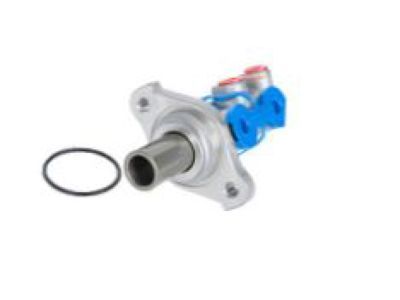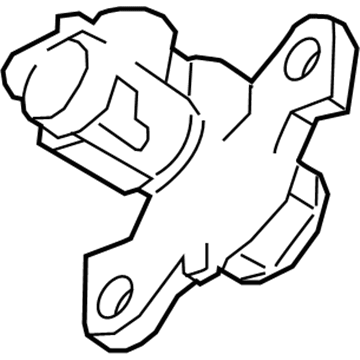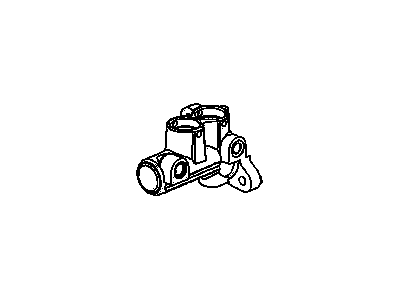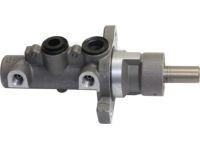My Garage
My Account
Cart
Genuine Chevrolet Equinox Brake Master Cylinder
- Select Vehicle by Model
- Select Vehicle by VIN
Select Vehicle by Model
orMake
Model
Year
Select Vehicle by VIN
For the most accurate results, select vehicle by your VIN (Vehicle Identification Number).
4 Brake Master Cylinders found
Chevrolet Equinox Cylinder Kit, Brake Master
Part Number: 20990924$236.70 MSRP: $469.65You Save: $232.95 (50%)Ships in 1-2 Business DaysChevrolet Equinox Cylinder Kit,Brake Master
Part Number: 19151463$77.18 MSRP: $224.11You Save: $146.93 (66%)Ships in 1-2 Business DaysChevrolet Equinox Cylinder Kit, Brk Mas
Part Number: 84667590$75.57 MSRP: $149.93You Save: $74.36 (50%)Ships in 1-2 Business Days
Chevrolet Equinox Brake Master Cylinder
Brake Master Cylinder in Chevrolet Equinox automobile is directly linked with the braking system and its job is to translate the foot pressure into the hydraulic pressure. This hydraulic pressure is taken to the slave cylinders, that activates the brakes and the needed friction to halt the automobile. Pleasingly, the master cylinder usually has two circuits with two pistons; in the case of a failure of one, the other can supply brake force hence making it safe. Brake Master Cylinders used in Chevrolet Equinox models may come in styles of cast iron or aluminum with integral reservoirs and nylon or plastic ones with external reservoirs. The difference is the external metal structure: while the integral types have a single lid, the external types are threaded. Long-term problems are likely to occur, for example, leakage or failure within the structure, hence a need to check and monitor for any signs of problems regularly.
Each OEM Chevrolet Equinox Brake Master Cylinder we offer is competitively priced and comes with the assurance of the manufacturer's warranty for the part. Furthermore, we guarantee the speedy delivery of your orders right to your doorstep. Our hassle-free return policy is also in place for your peace of mind.
Chevrolet Equinox Brake Master Cylinder Parts Questions & Experts Answers
- Q: How do I remove and install a master cylinder on Chevrolet Equinox?A: To remove the brake master cylinder, start by disconnecting the cable from the negative terminal of the battery. Then, move the engine compartment fuse/relay box aside if necessary. Use a syringe or turkey baster to remove as much fluid as possible from the reservoir, being careful not to introduce air into the brake hydraulic system. Place rags under the fluid fittings and prepare caps or plastic bags to cover the ends of the lines once they are disconnected. Loosen the fittings at the ends of the Brake Lines where they enter the brake master cylinder using a flare-nut wrench. Pull the brake lines slightly away from the brake master cylinder and plug the ends to prevent contamination. Disconnect the electrical connector at the brake fluid level switch on the brake master cylinder reservoir and remove the nuts attaching the brake master cylinder to the power booster. Pull the brake master cylinder off the studs and out of the engine compartment, being cautious not to spill any fluid. If needed, transfer the reservoir to the new brake master cylinder by driving out the retaining pins and removing the reservoir directly up. To install the new brake master cylinder, begin by bench bleeding it. Mount the brake master cylinder in a vise and attach a pair of brake master cylinder bleeder tubes to the outlet ports. Fill the reservoir with the recommended brake fluid and slowly push the pistons into the brake master cylinder using a large Phillips screwdriver to expel air from the pressure chambers. Repeat this process until no more air bubbles are present. Remove the bleed tubes one at a time and install plugs in the open ports to prevent fluid leakage and air from entering. Install the reservoir cap. Place the brake master cylinder over the studs on the power Brake Booster and tighten the attaching nuts finger tight. Thread the brake line fittings into the brake master cylinder by hand and tighten them securely. Connect the brake fluid switch electrical connector and fill the brake master cylinder reservoir with fluid. To bleed the cylinder on the vehicle, have an assistant depress the brake pedal and hold it to the floor. Loosen the fittings to allow air and fluid to escape, then close the fittings. Repeat this procedure on both fittings until the fluid is clear of air bubbles. Reinstall the fuse/relay box and reconnect the battery. Finally, test the operation of the brake system carefully before placing the vehicle into normal service.
Related Chevrolet Equinox Parts
Browse by Year
2022 Brake Master Cylinder 2021 Brake Master Cylinder 2020 Brake Master Cylinder 2019 Brake Master Cylinder 2018 Brake Master Cylinder 2017 Brake Master Cylinder 2016 Brake Master Cylinder 2015 Brake Master Cylinder 2014 Brake Master Cylinder 2013 Brake Master Cylinder 2012 Brake Master Cylinder 2011 Brake Master Cylinder 2010 Brake Master Cylinder 2009 Brake Master Cylinder 2008 Brake Master Cylinder 2007 Brake Master Cylinder 2006 Brake Master Cylinder 2005 Brake Master Cylinder








